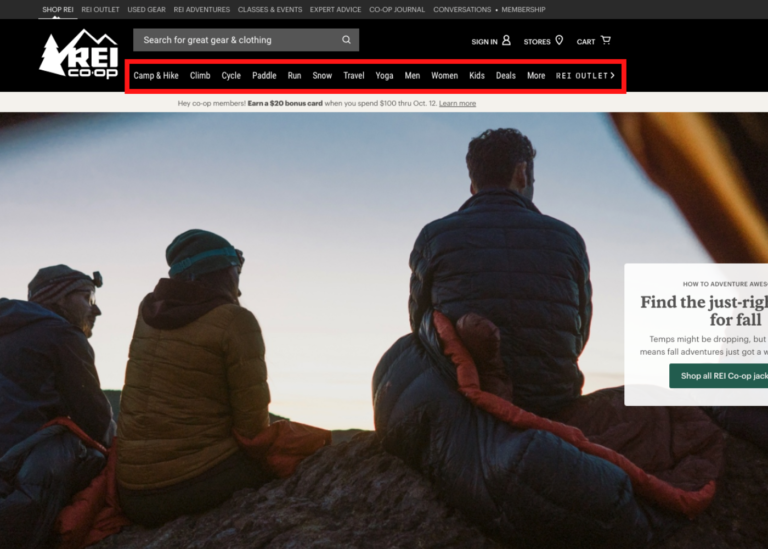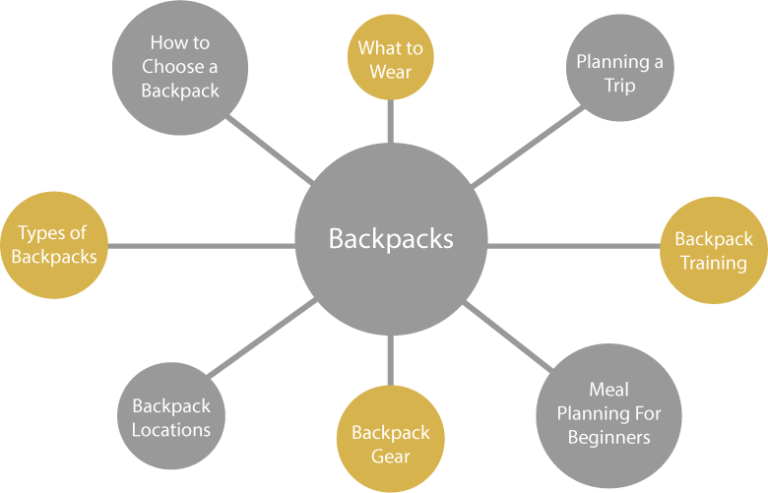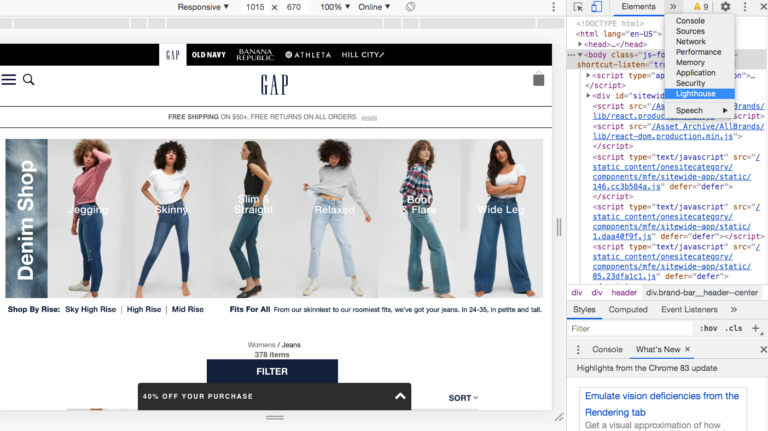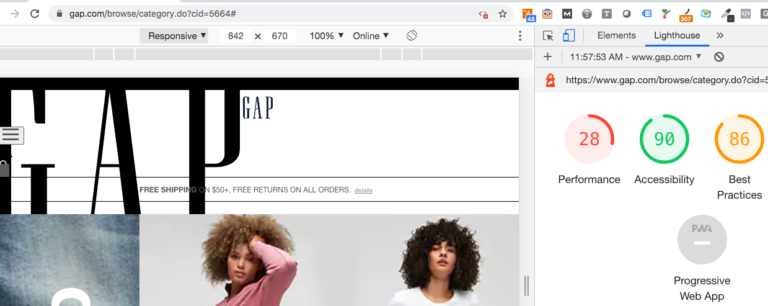18 Mar Enterprise Ecommerce Sites Can Win Big With an SEO Strategy via @shuey03
The world of SEO is always changing as Google adjusts its algorithm based on click data, site speed, links, location, personalized results, and numerous other factors.
In ecommerce, the pandemic has emphasized the need for organizations to be agile in their marketing strategies and focus on growing organic traffic, to protect the brand when paid media budget may need to be cut back.
What we learned this past year is that when times get tough, consumers turn to search to find answers to their every need.
Having a solid ecommerce SEO strategy is key in positioning your enterprise to weather any storm.
How Online Shopping Behavior Has Shifted
Many brands were forced to shut down in 2020 and for some, those closures were for good.
Late in 2020, Coresight Research reported that over 8,000 stores had permanently closed and estimates pegged the total potential closures at over 25,000 locations.
The closing of physical retail stores will have an even greater impact on the ecommerce industry than the massive 9,800 stores that closed in 2019.
These life-altering events have dramatically changed shopping behaviors.
In fact, Shopify research found that at the height of the COVID-19 pandemic, 10 years of ecommerce growth happened in just 90 days.
There is still uncertainty around how this could impact the economy for the rest of the year.
With all that has happened, buying habits are constantly fluctuating, as will marketing spend throughout 2021.
Don’t Forget SEO When Making the Move From Selling Offline to Online
In a recent retail survey, retailers shared their reactions to how they plan to make the shift from selling offline to online.
- 23% plan to hire or shift resources to ecommerce.
- 77% plan to change marketing campaigns.
- 42% plan to relax their current return policies.
- 28% laid-off employees.
- 42% plan to pause in-store pickups and return availability.
One tactic that retailers will do well to pay more attention to is SEO.
Google processes over 40,000 search queries each second and approximately 3.5 billion searches per day.
Optimizing your website to rank high on search engine result pages and frequently for target keywords can drive significant results for your enterprise for years to come.
3 Key Areas of Enterprise SEO for Winning in Ecommerce
If you plan to adjust your online selling strategy, take advantage of organic search as a major channel that has the potential to drive immediate traffic and revenue.
1. Information Architecture


Information architecture should be leveraged to structure websites in such a way that enhances findability and usability for both search engines and end-users.
In simpler terms, it takes website complexity and turns it into a comprehensible structure.
If you can’t find something on your website, Google search bots aren’t like to find it easily, either (let alone shoppers).
Organizing site information gets more complicated the further down you get into the site’s taxonomy.
Sites are structured to have categories and subcategories, then faceted navigation pages.
Take REI, for example; the top-level categories shouldn’t be too difficult to figure out.
Their header navigation includes things like camping & hiking, paddle, run, cycling, etc.


However, when you move down to the actual product listing pages (PLPs) or product matrix pages (PMP page), for example, things get more challenging.
You have to organize filtered content in a simple and effective way while giving users options with how they filter and find information.


Not only do you need to organize all of this information, but there are also other areas like blogs, community forums, or guides that need to be structured in a way to help search engines understand how relevant you are to a search query.
Once you organize all of this information, you can build a plan around how to better arrange this information on your site to make it easier for search engines to crawl it.
As you organize a site’s taxonomy, consider the types of information a consumer would need as they move through the buyer’s journey to conversion.
Many enterprise sites organize topics into keyword buckets around overarching topic ideas. This allows them to understand if they have organized and created content around the core topic areas.
Planning all of this can be tricky, but I suggest first nailing down your content buckets.
In the case of REI, they could take the main bucket of backpacking and start to organize things like this:


Pro Tip: Tools like MarketMuse can help organizations start to understand the gaps in their SEO strategy. Once you get that data, you can organize information on the site based on an SEO plan that deals with these gaps.
Now that you have collected and organized your site information, the two most important things for optimizing your information architecture for SEO are findability and usability.
2. Findability
Findability refers to the search bots’ and end-users’ ability to find content on your website using internal links, external links, sitemaps, and internal site search.
Ordered information ranks higher in Google search due to its availability and discoverability.
Google uses a crawl budget based on the site’s authority to find and process the information on a website.
A critical part of enterprise SEO is helping Google and other search engines find the most important information without spending all of the crawl budget getting hung up on JavaScript, CSS, and other files that should be excluded from being indexed.
This isn’t a problem with smaller sites, but when it comes to large enterprise sites there may be hundreds of thousands or even millions of pages for Google to sift through to locate information that a shopper would find useful.
 Source: Google Search Console Data
Source: Google Search Console Data
A great way to understand what information Google is finding on your site is by looking at Google Search Console data (GSC).
This data will give you a snapshot of the pages Google is crawling on your site as shown in the Crawl report chart above.
The goal is to help Google be efficient when they come to your site and find useful information as quickly as possible.
By analyzing GSC data, you can quickly understand what pages they are finding and indexing.
Use this data to make sure you are using robots.txt protocols or meta robots noindex tags appropriately and let Google know they should not crawl and index these pages.
Key Takeaway: Using a Robots.txt protocol suggests to Google they should not crawl the page. However, it does not guarantee that they will not crawl and index the page so you might still see the page indexed. If this is a problem, you can:
1) Insert noindex meta tags in the URLs you want to be removed.
2) Be patient and monitor GSC to see if Google removes the pages once they are crawled by Google.
3) Manually check to see if the URLs have been removed from Google’s index by doing a site:URL search.
4) Add the URL parameters into the robots.txt file to be disallowed in order to save crawl budget.
3. Usability
Usability is commonly referred to as User Experience, the combination of user interface and information architecture.
Google announced in May they will unveil a new ranking Page Experience algorithm specifically designed to judge and rank pages based on how users perceive the experience of interacting with your web page.
In creating an effective information structure for SEO, it is crucial to keep in mind which pages are most valuable to your organization.
The higher up in your site’s architecture a page is, the more likely it will be able to rank for competitive keywords.
Start broad and drill down to conversion-focused pages.
This approach takes users from the top of the sales funnel down to bottom-funnel conversion pages in a natural way as users research, learn, and convert.
For example, some variations to consider when building out your information architecture include:
- Gender (male, female, unisex), color, size (small, medium, large, etc.), size type (regular, petite, maternity, etc.), age group, and size system.
- Brand, gender, product type (top, bottom, dress, etc.) and attribute (color, size, material, etc.).
- Seasonal products like swimwear, backpacks sometimes use the occasion as an attribute in the title along with product type, attribute, etc.
Leveraging keyword research will help guide the decision on how to structure the site most effectively for organic search.


In the example table above, you can see that knee-high socks have a much larger search volume (33,100 searches a month on average) than the term crew socks (search volume of 18,100 searches a month on average).
If you sell both styles of socks and you had to decide on a link to add to the navigation, you would want to put more emphasis on a knee-high socks category/subcategory/facet given the larger search volume.
Site Optimizations to Improve Ecommerce Rankings
Enterprise-level organizations have a range of locations, products, services, and support resources that need optimized.
With hundreds to thousands of web pages to optimize for, this level of optimization can be extremely time-consuming and costly.
That’s why it’s crucial to find a balance of automation versus manual site optimizations.
Manual vs. Automated SEO
Depending on the complexity of the system being used, manual SEO could take a lot of time and resources to implement the most basic changes to each page such as title, meta description, and content container elements.
Automated optimizations, meanwhile, involve the use of software to implement the desired strategies, which means that it’s faster but more limited as to what it can do.
Some general rules of thumb as to what to automate versus perform manually include:
Manual SEO Elements:
- Core Landing Pages.
- Category.
- Subcategory.
- Core Landing Page Elements (i.e., Title tags, meta description tags, Header tags, and Content).
- Meta Robots Tags for Core Pages (i.e., Noindex/Index/Nofollow/Follow Tags).
- Content Container for Product Pages.
- Core landing page URL structure.
- 301 Redirects.
Automated SEO Elements:
- Product Pages Elements.
- Title tags.
- Meta description tags.
- Header tags.
- Alt Image text and image title text.
- Image sizing and compression.
- XML Sitemap Creation.
- Canonical tags elements.
- Product pages.
- Faceted navigation pages.
- Blog tags/category tags.
- Breadcrumbs generation.
- Related product links.
- Schema markup.
- Pricing.
- Product inventory level (i.e., in or out of stock).
- Product name.
- Product description.
- Product rating and star rating.
- Meta Robots Tags for Filter navigation pages (i.e., Noindex/Index/Nofollow/Follow Tags).
- Product page redirects (i.e., based on whether the product will be restocked).
Consider striking a balance between these two processes so that your enterprise site will have more web pages optimized, and high-valued pages can receive professional attention to yield stronger SEO results.
Technical SEO & Site Enhancements
Numerous tools can help find performance issues on a site and enable you to start working with developers and build a plan to clean things up.
DeepCrawl, Botify, Screaming Frog and the like are useful for crawling massive amounts of pages on a site to understand how a search engine is able to find issues like broken links and code issues.
If you need a quick way to understand a site’s performance, use Google Chrome inspect tools to generate a performance report.
Open up Chrome, right-click on the website and select Inspect.
Once the window is open select Lighthouse to generate a performance report.


Once you generate a report you will see things like performance, accessibility, SEO, etc.
This is a great starting point for uncovering some basic issues.


Depending on the platform the site is built on, certain elements are either quick to fix or take a lot of time and resources to find a good fix for.
It’s critical that the dev team and SEO team work closely once issues are identified so that everyone knows how much dev time is or will be required to fix an issue and more importantly, what the financial impact will be if time and resources are allocated toward cleaning things up.
Here is a quick list of things to dig into to make sure your SEO is not negatively impacted:
Page Speed
With Google switching to a mobile-first ranking system and Google’s announcement that page speed will play a role in how they rank for user experience, it’s crucial that all pages are fully optimized for quick load speed.
Below are site enhancements to consider adopting to increase your page speed:
Minify JavaScript, HTML, and CSS
Have a developer optimize your code by removing code comments, unnecessary formatting, and unused code. Google recommends using tools such as CSSNano and UglifyJS to help with this.
Reduce Redirects
Every time you have a page redirect to another page, you add additional time waiting for the HTTP request cycle to complete. Ensure your redirects have the least path of resistance to improve user experience.
Browser Caching
Browsers will collect information so that when a visitor comes back to your site, they will not have to reload the entire webpage. Using a tool that will allow you to set an expiration date for your cache will be most useful for your site as you make changes.
Crawl Budget
Crawl budget refers to the number of pages a search engine will crawl and index within a specific time frame.
Enterprise businesses must define the proper crawl rate for their website to ensure the most popular pages are crawled and indexed most effectively.
Crawl-related issues can limit a search engine’s ability to monitor and index the most critical content before the crawl budget reaches capacity.
XML SiteMap
An XML sitemap indicates to Google where information can be found on your website and helps search bots to find the information you want to be ranked accordingly.
Effective sitemaps take the following into consideration:
- Format your sitemap in an XML document.
- Follow XML sitemap protocol.
- Properly update your sitemap to include all pages on your website.
- Properly submit your sitemap to your Google Search Console.
Conclusion
When done strategically, your enterprise SEO can increase brand awareness, drive consistent revenue, and dominate your presence in the industry without paying for a click every time someone visits the site.
Brands that fail to properly invest in and develop an enterprise SEO strategy run the risk of losing critical real estate in search engine result pages, which can lead to significant drops in revenue.
As an enterprise, your site already has strong brand awareness. Maintain your industry dominance through effective SEO optimization and consistent monitoring.
More Resources:
- A New Era of Enterprise SEO: 7 Opportunities to Embrace Today
- How to Plan Your 2021 Enterprise SEO Strategy
- Enterprise SEO Guide: Strategies, Tools, & More
Image Credits
All screenshots taken by author, February 2021
Sorry, the comment form is closed at this time.